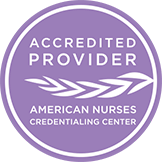Primary HTN, also known as essential HTN, accounts for almost 90% of all cases. Primary HTN is characterized by SBP values of 130 mmHg or more and/or DBP of over 80 mmHg. Primary HTN can be idiopathic or without an identifiable cause (Carretero & Oparil, 2000). It is considered a heterozygous disorder where patients have casual factors causing their high BP. Previous research has identified that patients may be salt sensitive, leading to the development of HTN (Iqbal & Jamal, 2022).
Specific factors known to increase BP in primary HTN include:
- Increased consumption of alcohol
- Increased consumption of salt
- Aging
- Overweight/obesity
- Stress
- Low calcium and potassium intake (Carretero & Oparil, 2000)
Primary HTN may be asymptomatic; therefore, diagnoses may be based on BP screenings. If the HTN has been chronic, patients may present with symptoms of end-organ damage, such as encephalopathy or acute pulmonary edema.
If patients are symptomatic, they may experience:
- Headaches
- Nose bleeds
- Chest pain
- Dizziness
- Hematuria
- Fatigue (Cleveland Clinic, 2021)
Though the physical exam may appear unremarkable, healthcare providers should examine for aortic valve disease, polycystic kidney disease, coarctation of the aorta, thyroid disorders, and renovascular diseases.
With examination, the patient should be seated for at least five minutes before taking BP. To diagnose primary HTN, the American College of Cardiology recommends that the BP be high on two office visits on separate dates. The European Society of Cardiology and European Society of Hypertension recommends recording the BP three times, at one to two minutes apart. Additional measurements may be warranted if the first two readings differ by > 10 mmHg. If not, BP is then recorded as an average of the readings. An ambulatory BP measurement, or a consistent measurement over 24 hours, has been noted to be the best method to diagnose HTN (Iqbal & Jamal, 2022).
The diagnosis and evaluation for primary HTN involve the following:
- Labs- blood count, electrolytes, cholesterol levels, erythrocyte sedimentation rate (ESR), serum uric acid, creatinine, estimated glomerular filtration rate (eGFR), thyroid levels, hemoglobin A1C (HbA1C), and urine albumin-to-creatinine ratio.
- 12-lead ECG- this will look at the rhythm and rate of the heart and if there is evidence of left ventricular hypertrophy.
- Fundoscopy- this will review maculopathy or retinopathy of the eye.
- Ankle-brachial pressure index (ABI)- to look for evidence of peripheral arterial disease.
Treatment for primary HTN consists of pharmacological and non-pharmacological interventions.
The Joint National Commission (JNC) has set treatment recommendations that include:
- Patients with diabetes mellitus and chronic kidney disease (CKD) whose BP is ≥ 140/90 mmHg should be given pharmacologic therapy and have a target BP less than 140/90 mmHg.
- Patients over the age of 60 with a BP of ≥ 150/90 mmHg should be given pharmacologic therapy and have a target BP of less than 150/90 mmHg.
- Patients between the ages of 18-59 with an SBP ≥ 140 mmHg should be given pharmacologic therapy and have a target BP less than 140 mmHg.
- Patients with diabetes who are African American should be treated with a thiazide diuretic and/or calcium channel blocker (CCB).
- Patients who have CKD should be treated with an angiotensin receptor blocker (ARB) unless contraindicated (Iqbal & Jamal, 2022).
Specific pharmacological agents depend on the level of BP and the patient's condition. Stage 1 HTN can be treated with one medication, also called monotherapy. Angiotensin-converting enzyme (ACE) inhibitors, ARBs, CCBs, and thiazide diuretics are generally the first choices. When using two medications, they should be from different drug classes. Most commonly, an ACE inhibitor or ARB and a CCB are the top choice. These guidelines change with patients who have significant comorbid conditions (Mann & Flack, 2023).









